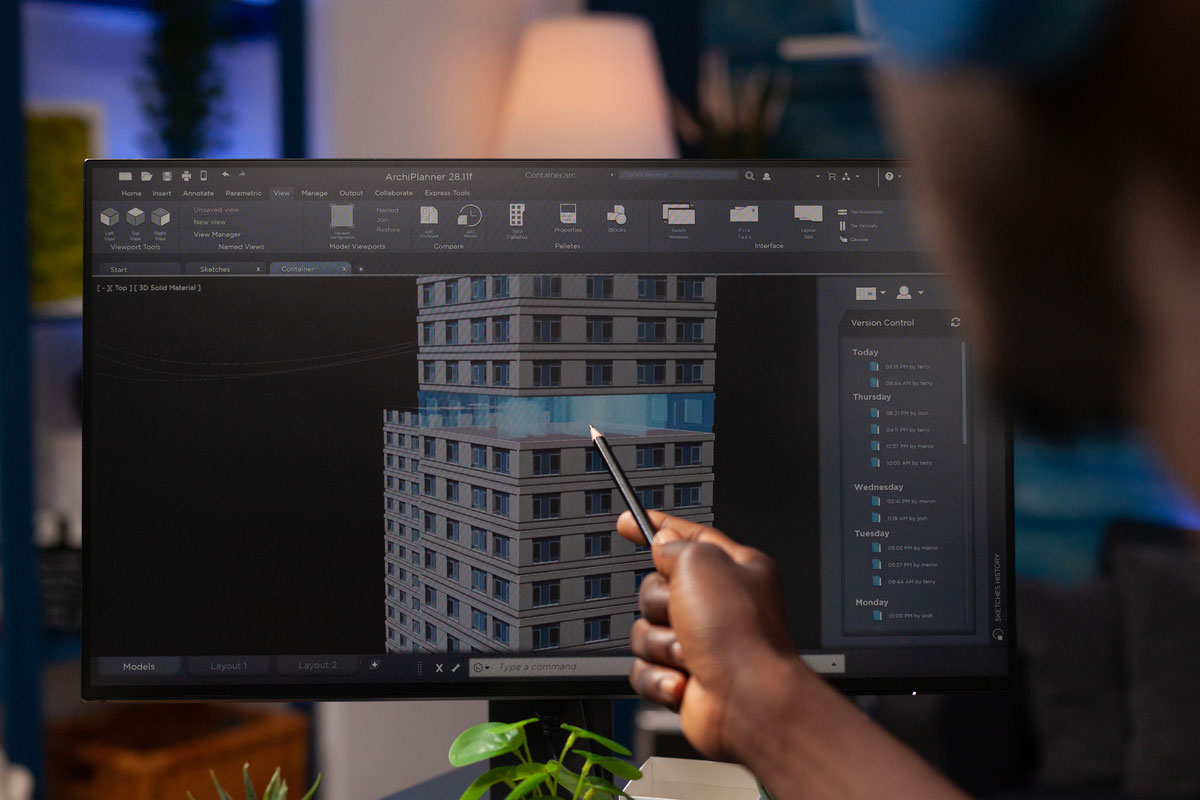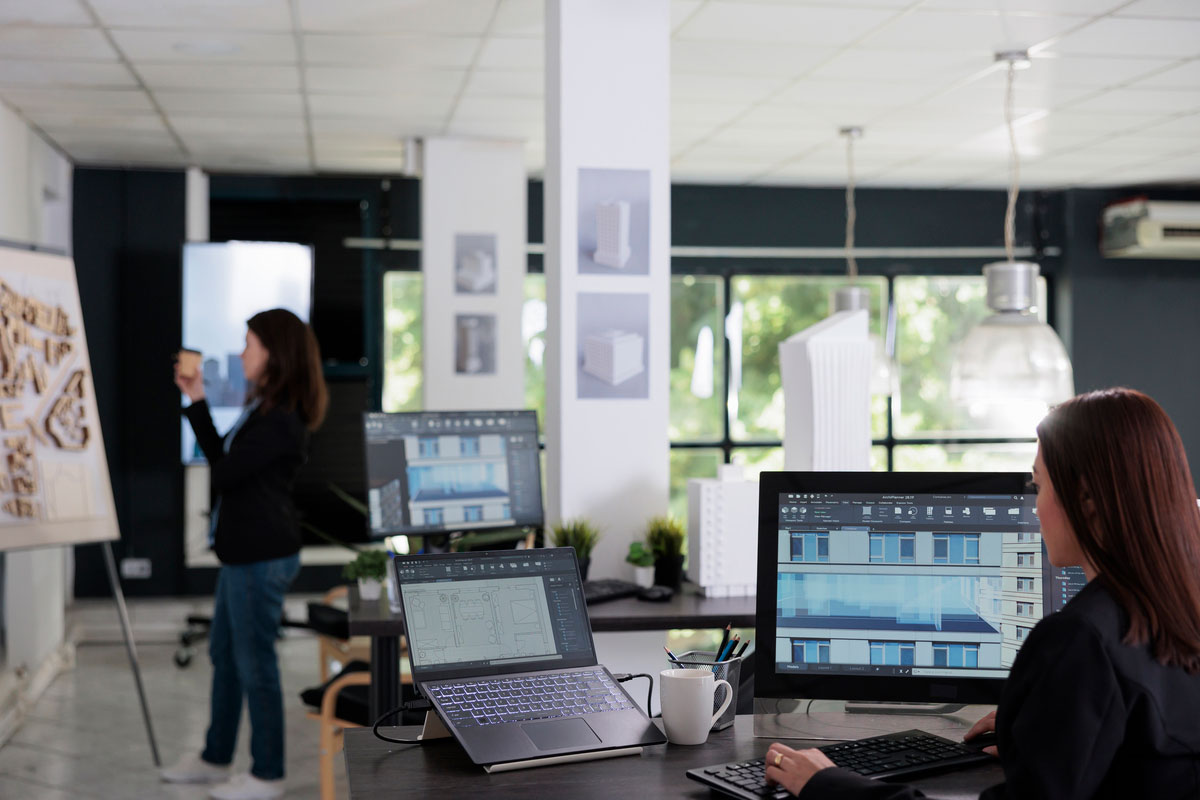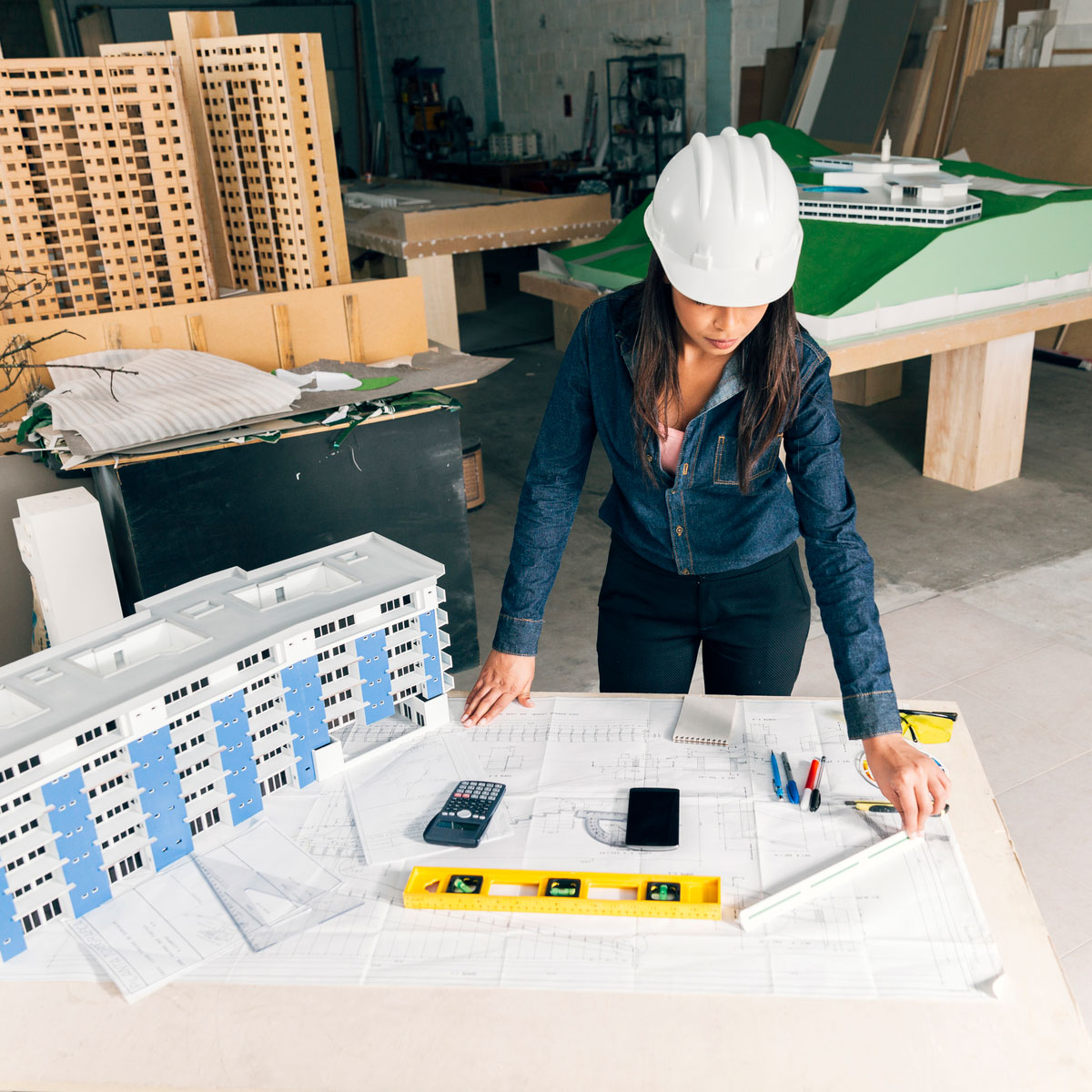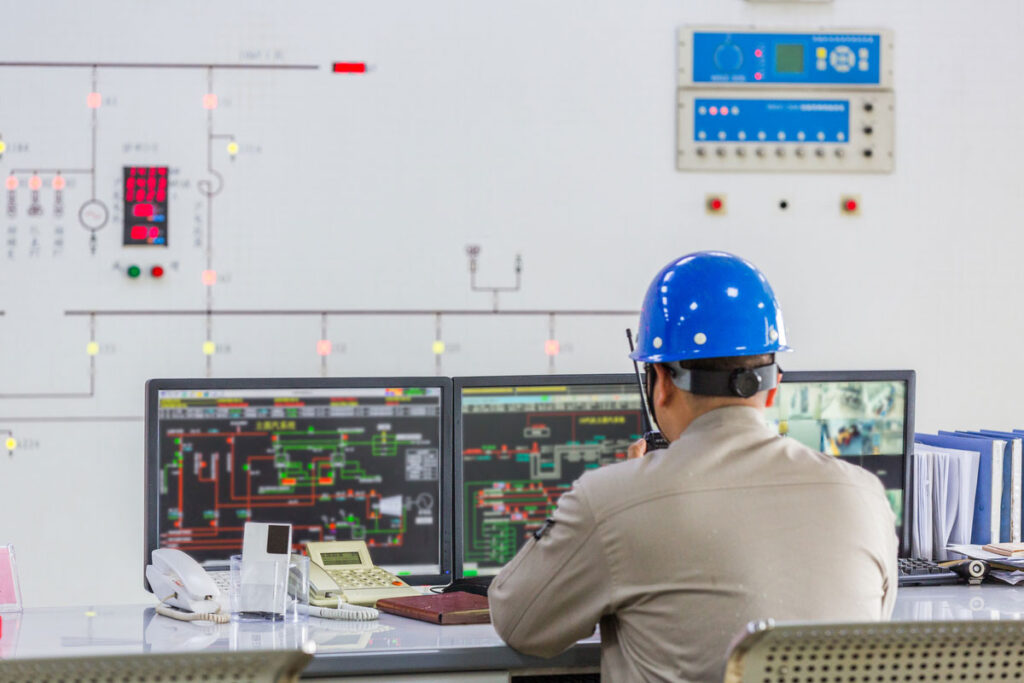Exclusive Neuroject Article: The evolution of construction technology has birthed a paradigm shift in the way buildings operate and interact with their environments. Live building systems stand at the forefront of this revolution, marrying cutting-edge technology, sustainability principles, and user-centric design to create intelligent, adaptable structures. These systems harness real-time data and smart automation to optimize efficiency, comfort, and environmental impact within the built environment.
The construction industry stands on the cusp of a transformative era—one defined by buildings that breathe, learn, and adapt. As the world grapples with pressing sustainability challenges, the need for smarter, more responsive structures has become imperative. Enter the realm of live building systems—pioneering innovations that promise a seismic shift in the way we conceive, construct, and inhabit buildings.
By 2050, it’s projected that nearly 68% of the world’s population will reside in urban areas, increasing the demand for sustainable, efficient infrastructure. Concurrently, buildings account for a staggering 36% of global energy consumption and approximately 40% of greenhouse gas emissions. In the face of these stark figures, live building systems emerge as a beacon of hope, offering solutions to optimize resource usage, enhance occupant comfort, and mitigate environmental impact.
Harnessing the power of data-driven technologies, these systems have already begun reshaping the architectural landscape. From smart sensors that monitor occupancy and energy usage to AI algorithms that fine-tune building operations in real-time, the integration of these technologies heralds a new era of sustainable, intelligent buildings.
Through a comprehensive exploration, this article delves into the intricate facets of live building systems, unraveling their components, technological advancements, implementation challenges, successful case studies, and future trends. Together, let’s embark on a journey to uncover the transformative potential and the profound impact of live building systems on our built environment and the world at large.
Table of Contents
Understanding Live Building Systems
Understanding live building systems involves grasping the synergy between technology, sustainability, and user-centric design to create intelligent and adaptive structures. These systems revolutionize conventional buildings by integrating sensors, actuators, and advanced control mechanisms, enhancing efficiency, comfort, and environmental impact.
At its core, live building systems embody the concept of ‘smart buildings.’ These structures are equipped with sensors that collect real-time data on various parameters like temperature, light, occupancy, and energy usage. These data are processed by sophisticated algorithms and AI-powered systems to optimize building operations, adjusting heating, cooling, lighting, and other functionalities in real-time.
The components of these systems work in tandem. Sensors act as the eyes and ears, capturing environmental data. Actuators act upon the information received, adjusting settings or activating systems accordingly. Control systems serve as the brains, processing data and making decisions to ensure optimal performance. This synergy creates an ecosystem where the building ‘learns’ from its environment and adapts to meet occupants’ needs while minimizing energy consumption and waste.
One pivotal aspect of live building systems is their ability to enhance sustainability. By intelligently managing resources, these systems reduce energy wastage and carbon footprint. For instance, adaptive lighting systems adjust brightness based on natural light levels or occupancy, minimizing electricity usage. Smart HVAC systems optimize temperature control by considering occupancy patterns and external weather conditions, reducing energy consumption without compromising comfort.
Moreover, the integration of live building systems significantly improves user experience. Occupants benefit from a more comfortable, personalized environment. For instance, automated blinds adjust to the sun’s position, preventing glare and optimizing natural light while reducing strain on occupants’ eyes. Additionally, personalized climate control in different zones of a building ensures individual comfort preferences.
Implementing live building systems, however, presents challenges. Integration complexities, data security concerns, and high initial costs are among the hurdles. Addressing these challenges requires collaboration among architects, engineers, technologists, and policymakers to develop standardized protocols, ensure cybersecurity measures, and invest in research to reduce costs.
Looking ahead, the future of live building systems is promising. Advancements in AI, IoT, and sustainable technologies will fuel innovations, making these systems more efficient, cost-effective, and scalable. Buildings will evolve into dynamic entities capable of adapting not just to environmental changes but also to occupants’ evolving needs and preferences.
In a nutshell, live building systems mark a transformative shift in architecture and construction. By amalgamating technology, sustainability, and user-centric design, these systems promise enhanced efficiency, comfort, and environmental consciousness. As we navigate the evolving landscape of construction, embracing and refining these systems will be pivotal in shaping the future of our built environment.

Why are Live Building Systems Important?
Live building systems play a pivotal role in modern construction and are significant for several reasons:
- Efficiency Enhancement: These systems optimize building operations in real-time, adjusting heating, cooling, lighting, and other functionalities based on data collected by sensors. This real-time responsiveness significantly reduces energy consumption and operational waste, promoting efficiency.
- Sustainability Advancement: Live building systems are integral to sustainable architecture. By intelligently managing resources, such as energy, water, and environmental conditions, these systems minimize a building’s carbon footprint. They promote eco-friendly practices by leveraging renewable energy sources and reducing waste.
- Enhanced User Experience: These systems prioritize occupant comfort and well-being. Adaptive features, such as personalized climate control, circadian lighting, and automated adjustments based on occupancy, create a more comfortable and tailored environment for occupants.
- Data-Driven Decision-Making: Live building systems collect a wealth of real-time data about the building’s environment and operations. This data becomes invaluable for facility managers, architects, and engineers, enabling data-driven decisions for better maintenance, energy management, and future improvements.
- Adaptability and Future-Readiness: These systems create adaptable structures capable of evolving with changing needs and technological advancements. Their flexibility allows for easy integration of new technologies, ensuring buildings remain up-to-date and functional for the long term.
- Resilience to Disruptions: Live building systems contribute to the resilience of structures. By monitoring and adjusting to changing conditions, they enhance a building’s ability to withstand and recover from disruptions, such as extreme weather events or infrastructure challenges.
- Economic Benefits: While the initial investment might be substantial, the long-term economic benefits are considerable. Energy savings, reduced maintenance costs, and improved operational efficiencies often outweigh the initial implementation expenses, leading to cost savings over time.
- Industry Evolution: Embracing live building systems drives innovation and propels the construction industry toward a more technologically advanced and sustainable future. It fosters collaboration among architects, engineers, and technology experts, pushing the boundaries of what buildings can achieve.
Ultimately, live building systems epitomize the fusion of technology, sustainability, and user-centric design, ushering in a new era where buildings actively respond to their environment, occupants’ needs, and global sustainability imperatives. Their importance lies in their transformative potential to revolutionize how we conceive, construct, and inhabit buildings, setting new standards for efficiency, sustainability, and user comfort in the built environment.
Components of Live Building Systems
Live building systems encompass various components that work together to create intelligent, adaptive, and efficient structures. These components form the backbone of a dynamic ecosystem that enables buildings to sense, process information, and act upon data in real-time. Here are the key components:
- Sensors: These are the sensory organs of live building systems. They capture real-time data about the building’s environment, including temperature, humidity, light levels, occupancy, air quality, and more. Sensors can be distributed throughout the building, collecting data from different areas and transmitting it to the central control system.
- Actuators: Actuators are the components responsible for taking action based on the information received from sensors. They control various building systems and functionalities, such as adjusting heating and cooling systems, opening and closing windows or blinds, controlling lighting levels, managing water usage, and more. Actuators execute the commands to optimize the building’s performance based on the collected data.
- Control Systems: Acting as the brain of the live building system, control systems process the data collected by sensors. They use algorithms and AI to analyze information and make decisions in real-time. Control systems manage and coordinate the actions of actuators to optimize building operations, ensure energy efficiency, and create a comfortable environment for occupants.
- Data Communication Networks: These networks facilitate the transmission of data between sensors, actuators, and control systems. They form the connectivity backbone that enables seamless communication and coordination among the components of the live building system. Wired or wireless networks, including IoT (Internet of Things) protocols, enable data transfer and ensure real-time responsiveness.
- AI and Machine Learning Algorithms: Advanced algorithms and machine learning models are employed to process the vast amounts of data collected by sensors. These algorithms analyze patterns, predict trends, and optimize building operations. AI allows for adaptive learning, enabling the building to continuously improve its efficiency and responsiveness based on evolving data patterns and user behavior.
- User Interface and Interaction Systems: These components provide the interface through which building occupants or administrators can interact with the live building system. User interfaces can range from simple control panels to sophisticated apps or platforms that allow users to monitor and adjust settings, access data, and provide feedback to improve system performance.
- Energy Storage and Management Systems: In some cases, live building systems incorporate energy storage solutions, such as batteries or other storage technologies. These systems store excess energy generated by renewable sources or during off-peak times and release it during high-demand periods, contributing to energy efficiency and grid stability.
These components form an interconnected network within the building infrastructure, enabling the creation of intelligent, adaptable, and sustainable structures that cater to the needs of occupants while optimizing resource usage and environmental impact.

How do Live Building Systems Lower Costs?
Live building systems contribute to cost reduction through various mechanisms that enhance operational efficiency, optimize resource usage, and minimize maintenance expenses:
- Energy Efficiency: One of the primary ways live building systems lower costs is through improved energy efficiency. These systems continuously monitor and adjust lighting, heating, cooling, and other energy-consuming systems based on real-time data. By optimizing energy usage and avoiding unnecessary consumption, buildings equipped with live systems experience significant reductions in energy bills over time.
- Reduced Maintenance Costs: Live building systems facilitate predictive maintenance by constantly monitoring the building’s components. They detect issues or inefficiencies early on, allowing for timely intervention before problems escalate. Proactive maintenance reduces the need for extensive repairs, prolongs equipment lifespan, and minimizes downtime, ultimately cutting maintenance expenses.
- Optimized Resource Utilization: Smart control mechanisms integrated into live systems ensure optimal utilization of resources such as water, heating, and cooling. By adjusting usage based on actual needs—like adjusting temperature settings based on occupancy or natural light levels—these systems prevent unnecessary waste, leading to lower utility costs.
- Long-Term Savings: Despite the initial investment required for implementation, live building systems often yield substantial long-term savings. Energy-efficient operations, reduced maintenance needs, and prolonged equipment lifespan translate into significant cost savings over the building’s lifecycle.
- Avoidance of Over-Engineering: Live systems provide real-time data on building performance and occupancy patterns. This information enables more accurate design and operational decisions, preventing over-engineering or oversized systems that can lead to unnecessary upfront costs during construction.
- Operational Streamlining: The integration of various building functions into a centralized control system streamlines operations. This simplification reduces the need for manual intervention and human error, contributing to operational efficiency and cost savings in staffing or operational processes.
- Improved Occupant Productivity: Enhanced occupant comfort and satisfaction, facilitated by live systems’ adaptive environments, can indirectly impact productivity and well-being. A comfortable and well-maintained environment can contribute to higher productivity levels among occupants, indirectly affecting the overall operational efficiency and bottom line of businesses housed within the building.
While the initial investment in implementing live building systems might seem significant, the cumulative effect of reduced operational costs, energy savings, minimized maintenance, and improved efficiencies typically outweigh the upfront expenses, leading to considerable cost reductions and economic benefits over the building’s lifecycle.
Technological Advances in 2023
In 2023, several technological advancements have further propelled the evolution of live building systems, transforming the way buildings operate, interact, and adapt. Here are some key advancements:
- Enhanced Sensor Technology: Sensors have become more sophisticated, compact, and cost-effective. Advancements in sensor technology have improved accuracy, allowing for more precise data collection on various parameters like temperature, humidity, air quality, occupancy, and light levels. Additionally, multi-sensor fusion technologies have emerged, enabling more comprehensive and integrated data gathering.
- AI and Machine Learning Integration: AI algorithms have advanced significantly, enabling more sophisticated data analysis and decision-making in real-time. Machine learning models can now process complex datasets generated by sensors, allowing for predictive analytics, anomaly detection, and adaptive control strategies. These systems can learn from patterns and user behavior, optimizing building operations for efficiency and comfort.
- Edge Computing and Decentralized Systems: Edge computing has gained prominence, allowing data processing and analysis to occur closer to the source (sensors) rather than relying solely on centralized servers. This facilitates quicker response times, reduces latency, and enhances the overall efficiency of live building systems. Decentralized systems also enhance resilience by distributing computing power across the building.
- Integration of Blockchain for Security: Blockchain technology is being explored for enhancing the security and integrity of data in live building systems. By providing a decentralized and immutable ledger, blockchain ensures data transparency, integrity, and secure transactions within the building’s ecosystem, addressing cybersecurity concerns associated with interconnected systems.
- Renewable Energy Integration: Advances in renewable energy technologies, such as more efficient solar panels and improved energy storage solutions, have facilitated the integration of renewable energy sources into live building systems. Buildings can harness and store renewable energy more effectively, reducing reliance on conventional energy sources and lowering their carbon footprint.
- Human-Centric Design Solutions: Technology has evolved to prioritize user comfort and well-being within buildings. Human-centric design solutions leverage biophilic design, circadian lighting systems, and personalized climate control to enhance occupants’ health, productivity, and overall experience within the building environment.
- Smart Materials and Adaptive Architecture: Innovations in materials science have led to the development of smart materials capable of responding to environmental stimuli. These materials, integrated into building structures, can dynamically adapt to environmental changes, regulating temperature, light transmission, or structural integrity based on external conditions.
- Standardization and Interoperability: Efforts towards standardization and interoperability protocols have progressed, allowing different components and systems from various manufacturers to communicate and integrate seamlessly. This fosters greater compatibility, simplifies system integration, and promotes the scalability of live building technologies.
These technological advancements in 2023 have contributed to the continued evolution and refinement of live building systems, fostering more intelligent, efficient, and user-friendly building environments while driving sustainability and resilience in the construction industry.

Implementation and Integration
Implementing and integrating live building systems into construction projects involve several key steps and considerations to ensure successful deployment and optimal functionality:
- Initial Assessment and Planning:
- Conduct a thorough assessment of the building’s requirements, including its purpose, occupancy patterns, environmental conditions, and energy needs.
- Define clear goals and objectives for implementing live building systems, considering factors like energy efficiency targets, user comfort, and sustainability goals.
- Collaboration and Team Integration:
- Foster collaboration among architects, engineers, technology experts, and stakeholders to ensure a holistic approach to system design and integration.
- Involve relevant parties from the early design stages to seamlessly incorporate live building systems into architectural plans.
- Technology Selection and Design Integration:
- Identify suitable technologies and components that align with the building’s requirements and objectives.
- Integrate these systems into the building’s design and infrastructure, ensuring compatibility and functionality without compromising the architectural vision.
- Data Security and Privacy Measures:
- Implement robust cybersecurity measures to safeguard sensitive data collected by sensors and control systems.
- Ensure compliance with privacy regulations and ethical considerations regarding the collection and use of occupants’ data within the building.
- Installation and Testing:
- Deploy sensors, actuators, control systems, and communication networks according to the design specifications.
- Conduct rigorous testing and calibration to ensure the proper functioning and integration of all components before full-scale operation.
- User Training and Engagement:
- Provide training sessions to building occupants, facility managers, and maintenance staff on how to interact with and utilize the live building systems effectively.
- Encourage user engagement and feedback to improve system performance and address user-specific needs.
- Monitoring and Optimization:
- Implement continuous monitoring of system performance to identify inefficiencies or areas for improvement.
- Utilize collected data and analytics to optimize the operation of live building systems, fine-tuning settings for maximum efficiency and user comfort.
- Maintenance and Upgrades:
- Establish a regular maintenance schedule to ensure the smooth operation of components and systems.
- Plan for future upgrades and advancements in technology to keep the building systems up-to-date and in line with evolving standards and innovations.
- Documentation and Documentation:
- Maintain comprehensive documentation of system configurations, installations, and maintenance procedures for reference and future upgrades.
- Ensure clear documentation of protocols and procedures for troubleshooting and addressing issues that may arise.
Successful implementation and integration of live building systems rely on meticulous planning, interdisciplinary collaboration, technological expertise, and a focus on meeting the building’s specific needs while enhancing efficiency, sustainability, and user experience.
Challenges and Solutions
Challenges and solutions in implementing live building systems encompass various facets:
- Integration Complexity: The integration of diverse technologies, including sensors, actuators, control systems, and communication networks, into existing building infrastructures is a complex task. Ensuring seamless connectivity and interoperability among these components poses a significant challenge during implementation.Solutions: Robust planning and design strategies that emphasize standardized protocols and open architectures are crucial. Developing industry-wide standards and protocols encourages compatibility among different systems, facilitating smoother integration and communication. Moreover, leveraging modular and scalable components eases the integration process and allows for incremental upgrades.
- Data Security Concerns: The massive influx of data collected by sensors raises legitimate concerns regarding data security, privacy, and integrity. Safeguarding this data against cyber threats and unauthorized access becomes a paramount challenge.Solutions: Implementing stringent cybersecurity measures is imperative. Encryption, authentication protocols, regular security audits, and access controls are vital in fortifying live building systems against potential cyber threats. Compliance with data privacy regulations and the adoption of best practices in data handling further ensure data security and integrity.
- Initial Costs: The initial investment required for deploying sophisticated sensors, AI-driven systems, and interconnected networks can be substantial, potentially deterring widespread adoption, especially for retrofitting existing structures.Solutions: Conducting thorough lifecycle cost analyses is essential to showcase the long-term economic benefits. Highlighting the significant savings in energy efficiency, reduced maintenance costs, and enhanced operational efficiency over the building’s lifespan can justify the initial investments.
- Interoperability Issues: Compatibility challenges arise when integrating systems and components from different manufacturers. The lack of standardized communication protocols among devices complicates seamless integration.Solutions: Emphasizing standardized protocols and open architectures becomes pivotal. Establishing industry-wide standards encourages compatibility among disparate systems, ensuring easier integration and communication. Collaborative efforts between manufacturers to adopt common protocols can mitigate interoperability challenges.
- User Adaptation: Occupants, facility managers, and maintenance staff might face challenges in understanding and effectively utilizing complex systems, leading to initial resistance or inefficiency.Solutions: Providing comprehensive training programs and intuitive user interfaces is crucial. Educational initiatives that familiarize users with system functionalities and operations enhance their confidence and competence. Ongoing support and accessible resources further aid users in navigating and optimizing these advanced systems, fostering smoother adoption and utilization.
Addressing these challenges with a multi-pronged approach—embracing technological innovation, industry collaboration, adherence to standards, robust cybersecurity measures, and user empowerment—lays a robust foundation for successful implementation and widespread acceptance of live building systems.

Case Studies
Here are a few case studies showcasing successful implementations of live building systems:
- The Edge, Amsterdam, Netherlands:
- Deloitte’s headquarters, The Edge, is renowned for its innovative design and sustainable features.
- It utilizes a sophisticated array of sensors to monitor temperature, light, occupancy, and energy usage.
- The building’s intelligent lighting adjusts based on natural light levels and occupancy, contributing to significant energy savings.
- Live building systems optimize heating, cooling, and workspace utilization, resulting in a nearly energy-neutral building.
- One Bryant Park, New York City, USA:
- One Bryant Park, known as the Bank of America Tower, integrates live building systems for efficiency and sustainability.
- Its advanced HVAC system uses captured waste heat from computer servers to heat water, reducing energy consumption.
- Sensor-based technologies adjust lighting and temperature based on occupancy, contributing to a 50% reduction in energy use compared to traditional office buildings.
- The Crystal, London, UK:
- The Crystal, a sustainable cities initiative by Siemens, exemplifies smart and sustainable building design.
- It employs various live building systems, including real-time energy monitoring, water recycling, and predictive maintenance using IoT.
- The building showcases how live systems optimize energy efficiency, reduce water consumption, and enhance overall sustainability.
- Pixel, Melbourne, Australia:
- Pixel, a mixed-use sustainable building, utilizes live building systems to maximize energy efficiency and user comfort.
- It employs a centralized control system that monitors and adjusts lighting, heating, and cooling based on occupancy and natural light levels.
- The building’s smart systems contribute to a reduced environmental footprint while providing a comfortable and adaptive workspace for occupants.
- The Crystal Island, Moscow, Russia:
- The Crystal Island project in Moscow aims to be one of the world’s largest green buildings.
- It integrates live building systems to optimize energy usage, manage waste, and utilize renewable energy sources.
- The ambitious project aims to showcase how live systems can create a sustainable and technologically advanced urban environment.
These case studies demonstrate the successful integration of live building systems in various architectural designs, emphasizing energy efficiency, sustainability, and user-centric design while showcasing the potential for creating intelligent, adaptive, and environmentally friendly structures.
Future Trends and Predictions
Looking ahead, several key trends and predictions are anticipated to shape the future of live building systems:
- Enhanced AI and Predictive Analytics:
- AI and machine learning will play an increasingly crucial role in live building systems, enabling predictive analytics to anticipate and respond to building needs in real-time.
- Systems will evolve to learn from historical data, user behavior, and external factors to optimize energy usage, comfort, and maintenance schedules proactively.
- Ubiquitous IoT Integration:
- IoT devices and sensors will become even more prevalent, seamlessly integrating into building infrastructures to enable comprehensive data collection and communication.
- The proliferation of IoT will expand the scope of live building systems, facilitating deeper insights into building performance and occupant behaviors.
- Decentralized Energy Solutions:
- Continued advancements in renewable energy and energy storage technologies will lead to more decentralized energy solutions within buildings.
- Buildings will increasingly generate and store their energy, leveraging solar panels, wind turbines, and innovative storage systems to minimize reliance on external energy grids.
- Biophilic Design Integration:
- Biophilic design principles, emphasizing connections with nature, will be integrated into live building systems to enhance occupant well-being and productivity.
- Natural elements like green spaces, natural light, and indoor air quality improvements will be seamlessly incorporated using smart technologies.
- Adaptive and Smart Materials:
- Smart materials capable of adapting to environmental conditions will gain prominence in building design.
- These materials will dynamically respond to temperature, light, and other stimuli, regulating building conditions without additional energy consumption.
- Interoperability and Open Standards:
- Efforts toward standardization and open protocols will intensify, fostering greater interoperability among different building systems and components.
- This will enable seamless integration and communication between devices and systems from various manufacturers, promoting scalability and flexibility.
- Focus on Health and Wellness:
- Live building systems will increasingly prioritize occupant health and wellness, incorporating features like circadian lighting, air quality monitoring, and personalized comfort settings.
- Technologies will aim to create environments that support mental and physical well-being, positively impacting occupant productivity and satisfaction.
- Resilience and Adaptive Infrastructure:
- Building systems will evolve to become more resilient and adaptive in the face of climate change and unforeseen disruptions.
- Adaptive infrastructure and redundancy measures will be integrated to ensure continued functionality during extreme events or emergencies.
These trends signify a future where live building systems become more intelligent, adaptable, and focused on enhancing sustainability, occupant well-being, and operational efficiency within the built environment. The convergence of technology, sustainability, and user-centric design will drive the evolution of buildings into dynamic, responsive, and resilient entities.

Conclusion
In our exploration of live building systems, we’ve uncovered a revolutionary approach that marries technology, sustainability, and user-centric design. These systems redefine traditional construction by interweaving sensors, actuators, and cutting-edge control mechanisms, elevating efficiency, comfort, and environmental impact.
At their essence, live building systems epitomize ‘smart buildings.’ With sensors as the building’s senses, real-time data on temperature, occupancy, and more are harnessed, and processed by advanced algorithms to fine-tune operations instantly. This symbiosis—where sensors perceive, actuators act, and control systems decide—nurtures an adaptive environment, responding to occupants’ needs while curtailing waste.
Their sustainability prowess is remarkable. From adaptive lighting reducing energy consumption to HVAC systems intelligently adjusting to weather and occupancy, these systems slash waste and carbon footprints. Meanwhile, occupants revel in a personalized, comfortable milieu—a testament to living systems’ user-centricity, like automated blinds adjusting to natural light, sparing occupants from glare.
Yet, implementation hurdles linger—integration complexities, security concerns, and upfront costs necessitate collaborative solutions. Looking forward, the horizon glimmers with promise. Advancements in AI, IoT, and renewables will propel innovation, making systems more efficient, affordable, and scalable.
Live building systems signify a seismic shift in construction paradigms. Melding technology, sustainability, and user-centricity, they promise heightened efficiency, comfort, and environmental stewardship. As we navigate the ever-evolving realm of construction, embracing and refining these systems will be pivotal in crafting a future where buildings seamlessly harmonize with occupants and the environment.
Suggested article to read:
Artificial Intelligence or AI in Construction Industry
Resources:
Live Building Systems | The real deal | Robson Forensic | archi bus | Glassdoor | Indeed
For all the pictures: Freepik





